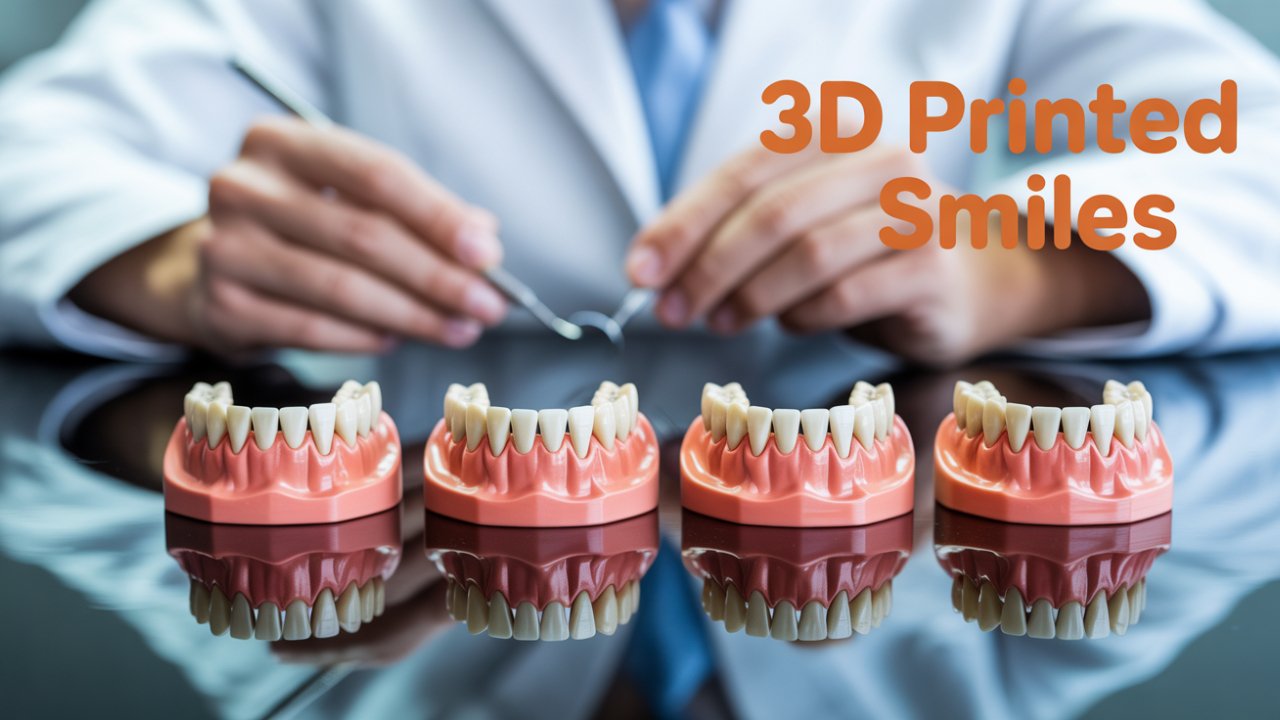In the last few years, dental science has progressed at a pace that has never happened before. Where earlier it used to take several weeks to treat a single tooth, today the same treatment has become possible in just one or two days. And the biggest reason for this change is – 3D printing technology.
Today 3D printing is not just limited to engineering or factories, but it has also revolutionized the world of dentistry. With the help of this technology, dental implants, bridges, dentures and other prosthetics can now be designed and prepared with great precision.
Let us know in this article how 3D printing is improving dental care, how it is benefiting patients, and how bright is the future of this technology.
What is 3D Printing and What is Its Relation with Dentistry?
3D printing is a process in which an object is designed with the help of a computer and then printed layer by layer by a machine. It is also called “additive manufacturing”. It is used in dentistry when doctors digitally scan a patient’s mouth to make a perfect tooth, bridge, or denture according to that.
For example – if a patient has lost a tooth, first a mold had to be made, then it was sent to the lab, then the fitting was checked. Now doctors take a 3D scan of the patient’s mouth and a new tooth is made the same day with a 3D printer.
1. Precise Fit of Implants and Prosthetics: Just Like Your Teeth
The biggest feature of 3D printing is “personalization” i.e. a treatment specifically designed according to the shape of each patient’s mouth.
How?
- First digital scanning is done – such as with an intraoral scanner.
- Then that data is entered into CAD software, where the doctor prepares the design.
- Then that design is sent directly to the 3D printer and the new tooth is ready.
The advantage of this is that:
- The new tooth fits perfectly, so the patient does not have any pain or discomfort.
- There is no need to adjust the teeth again and again.
- The tooth is more durable and does not break easily.
For example: If a patient needs a bridge on one side, then a bridge of the same size, same color and same shape can be prepared through 3D printing, so that it remains in harmony with the rest of the teeth.
2. The Time Taken for Treatment Has Reduced a Lot
The traditional way of making teeth used to take several weeks. Making a mold, sending it to the lab, getting it fitted and then taking repeated appointments – all this took time and effort.
Now with 3D printing:
- It takes only a few minutes to take a scan of the patient’s mouth.
- The design is made the same day and the new tooth is prepared by the printer.
- The tooth can be fitted the next day or in a few hours.
What is the benefit of this?
- The patient does not need to come to the clinic again and again.
- In case of emergency, treatment can be done immediately.
- Both the patient and the doctor save time and money.
3. The Patient Gets More Comfort and Satisfaction
Today’s generation does not just want treatment, they also want a comfortable and great experience. And 3D printing is proving to be very helpful in this matter.
- The tooth fits perfectly, so there is no problem in eating, chewing, speaking.
- The color and texture are so accurate that it becomes difficult to differentiate between real and fake.
- There is very little chance of pain or swelling, which also removes the fear of the patient.
For example: A woman who works in front of the camera, if her front tooth breaks, she wants quick and beautiful treatment. With 3D printing, she can get a new, beautiful and fit tooth in a day – without long treatment.
4. Low Cost and High Availability
Usually we think that new technology is expensive, but with the advent of 3D printing, the cost of dental treatment has started coming down.
How?
- The need for manual labour has reduced.
- The dependence on external labs has reduced.
- The process is fast and efficient – allowing doctors to treat many patients in a single day.
The advantage of this is that:
- Good quality treatment can be available cheaply even in villages or small towns.
- The middle class and the elderly can also easily get dental implants.
5. Future Prospects: 3D Printing is Not Limited to Teeth Only
The use of 3D printing is no longer limited to implants or dentures. There are many more uses for it:
- Orthodontic devices such as invisible braces
- Guides used in surgery
- Bone grafts and regenerative materials
- Customized tools for children to correct crooked teeth
In the future, this technology will become even more amazing by connecting with AI (Artificial Intelligence). Doctors will be able to create a very accurate design with the help of AI by looking at the patient’s records, scans and needs.
Conclusion: 3D Printing is the Future of Dental Care
3D printing has brought a new revolution in the world of dentistry. Now treatment has not only become easier and faster, but it has also become more personalized, comfortable and effective.
- The tooth is designed exactly according to your mouth.
- Time is saved and treatment is completed quickly.
- The cost is less and more people can take advantage of it.
